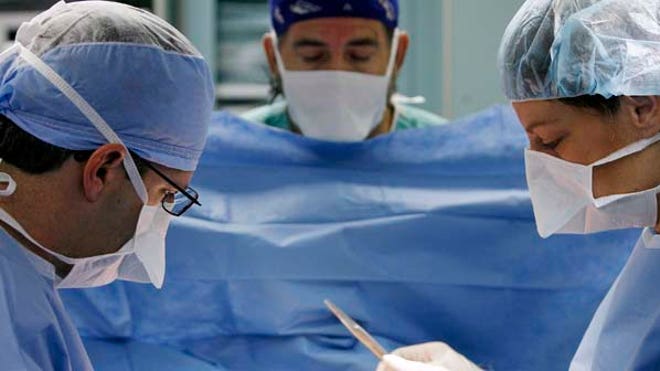The
average adult who is about 40 years old must have used Aspirin at one
point or the other, especially in managing body pains, fever and
inflammation.
In recent times, researchers even claim
that the drug could also be used to treat or prevent heart attacks,
strokes, and chest pain (angina). It is also an ingredient in many
teething gels.
They also note that, under the
supervision of a competent physician, Aspirin could be used for
cardiovascular conditions — that is a class of diseases that involve the
heart and the blood vessels (arteries, capillaries, and veins).
Again, a study published in the scientific journal, Lancet,
notes that Aspirin not only lowered the incidence of colon cancer among
the subjects used for an experiment, but it also lowered the mortality
from other common cancers.
The researchers also suggested that in
people with an initial diagnosis of cancer, Aspirin decreased the
frequency of the spread of their cancers (metastasis).
But while this class of drug could be
indicated in the treatment of a wide array of health issues, not
everyone can tolerate it, hence the fatal reaction that some users
sometimes experience.
A General Practitioner, Dr. Tomi
Abegunde, warns against using Aspirin if you have a bleeding disorder
such as haemophilia, a recent history of stomach or intestinal bleeding,
or if you are allergic to non-steroidal anti-inflammatory drugs.
She also says the medication must not be administered on a child or teenager who has a fever, flu symptoms, or chicken pox.
Worse still, she notes, when used by
children, Aspirin can cause Reye’s syndrome — a potentially fatal
disease that affects many body organs, especially the brain and liver;
and it may also cause a lower than usual level of blood sugar
(hypoglycemia).
She warns that the classic features of
Aspirin intolerance include rashes, vomiting, and, in extreme cases,
liver damage; and that those who are in the habit of combining drugs,
especially the ones doctors have not recommended, stand the risk of
fatal reactions.
Abegunde says “this is because when over-the-counter painkillers are mixed, chronic, long-term health problems can result.”
She advises those who have asthma,
stomach ulcers, liver disease, kidney disease, bleeding or blood
clotting disorder, heart disease, high blood pressure, or congestive
heart failure, among others, must seek and obtain doctor’s permission
before popping this drug.
For an expectant mom, Abegunde says,
Aspirin may be harmful to an unborn baby’s heart, it may reduce birth
weight or have other dangerous effects.
And for lactating mothers, she warns
that the medication could pass into breast milk and thus harm a nursing
baby. She says to play safe, you should not breast-feed while using this
medicine.
Better than Aspirin
A Chiropractor and Chairman, Natural
Health Practitioners in Nigeria, Prof. Magnus Atilade, notes that in
line with global practices that now tend towards disease prevention
instead of management, in addition to nourishing the body, eating fresh
foods that contain natural Aspirin holds diseases, pain and infections
at bay, thereby allowing you to live optimally.
An online portal, allergyuk.org, advises
that salicylates (a major ingredient of Aspirin and other
pain-relieving medications) in foods may be important for the prevention
of cancer and heart disease.
In general, researchers say, the simple
chemical, salicylates, are found naturally in plants. They are also
found in many fruits and vegetables, as well as in many common health
and beauty products.
Dark green apples
Generally, apples are considered the
world’s healthiest food. A research scientist, Robert Hatherill, notes
that in addition to the numerous health benefits that are accruable from
eating apples, some preliminary results show the fruit’s benefits for
several different cancer types (especially colon and breast cancers).
Researchers also claim that though many
studies show an impressive ability of overall fruit and/or vegetable
intake to lower lung cancer risk, very few individual fruit shows up as
protective against lung cancer as do apples.
Other fruits
Researchers at the Human Nutrition Unit,
University of Sydney, New South Wales, Australia, led by Dr. Anne R.
Swain, opine that most fruits contain considerable amounts of
salicylates. They say raisins and prunes have the highest amounts, while
most berry fruits are significant sources of the chemical.
While apples reportedly show
considerable variation of salicylate content between varieties, the
researchers give dried fruits thumbs-up, saying they have relatively
high salicylate contents, compared with their fresh counterparts.
“This is because of the removal of water during the drying process,” Swain says.
And as strong as this chemical is, the
researchers note that even heat processing for canning foods that
contain salicylates does not seem to affect appreciably the salicylate
content of fruit.
Within the vegetable group, they say,
salicylate content varies widely among raw foods such as dried beans,
green cabbage, celery, lentils, lettuce, and dried peas.
“While fresh tomatoes contain only small
amounts of salicylates, many commonly used tomato products such as
canned tomato, tomato sauce, and tomato ketchup are considerable sources
of salicylates,” Swain says.
Condiments
Some of the herbs and spices we use in
cooking contain much more salicylates than has previously been reported
for any food, researchers claim. Says Swain, “We found that curry powder
contains 218mg salicylates per 100g. Others almost as high were
paprika, thyme, dill powder, oregano and turmeric.”
Other foods
According to scientists, other foods
that contain high levels of salicylates include soya sauce, tea (except
fruit and camomile tea), coffee, dried herbs and spices, black pepper,
cherries, strawberries, fruit juices, cider, wine, peppermints and
liquorice.
Others are peanuts, avocados, blueberries, dates, peaches, grapes, and grapefruit.
Vegetables such as cucumbers, mushrooms, broad beans, eggplant, spinach, broccoli, and hot peppers are also rich in salicylates.
So, eat on!


















